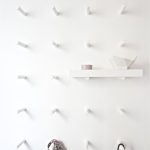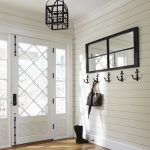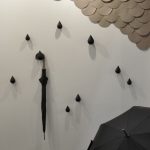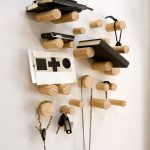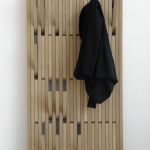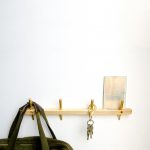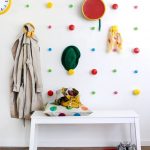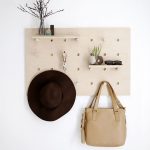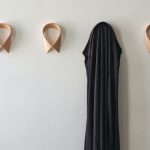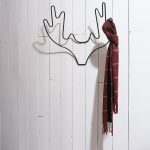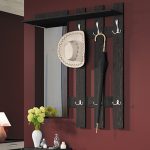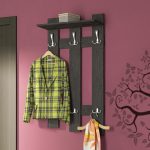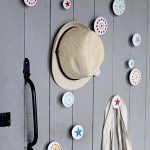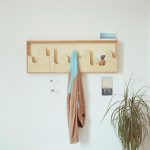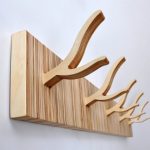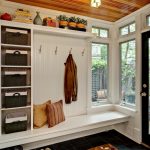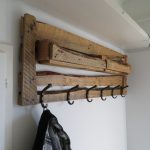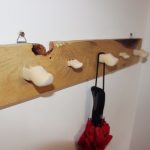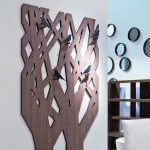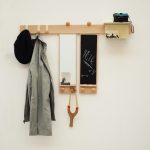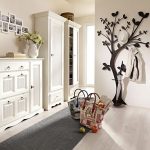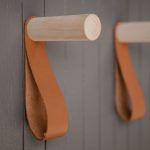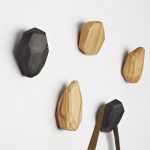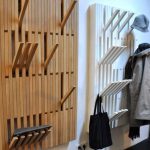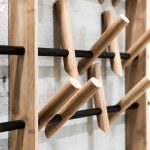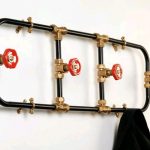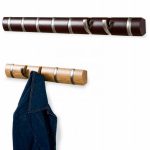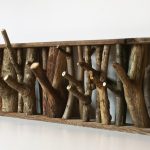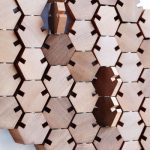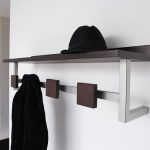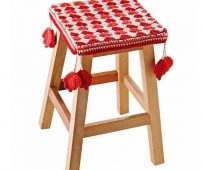 Want to make a cover on the stool with your own hands? Crochet it!
Want to make a cover on the stool with your own hands? Crochet it!
Hanger in the hallway with their own hands.
Coming home, the first thing we do is remove the outerwear and hang it in the closet or on the hanger. The latter option has some significant advantages: it takes up little space, provides quick access to things, is easy to assemble, and is suitable for corridors of various shapes and sizes.

Due to the simplicity of construction, it is not difficult to build a hanger in the hallway with your own hands.
The advantages of self-production:
- Hlow cost of the product;
- ATOpportunity to achieve the best combination with the interior;
- ANDindividuality hangers: this will not be among your friends and acquaintances;
- Racademic work is highly appreciated.
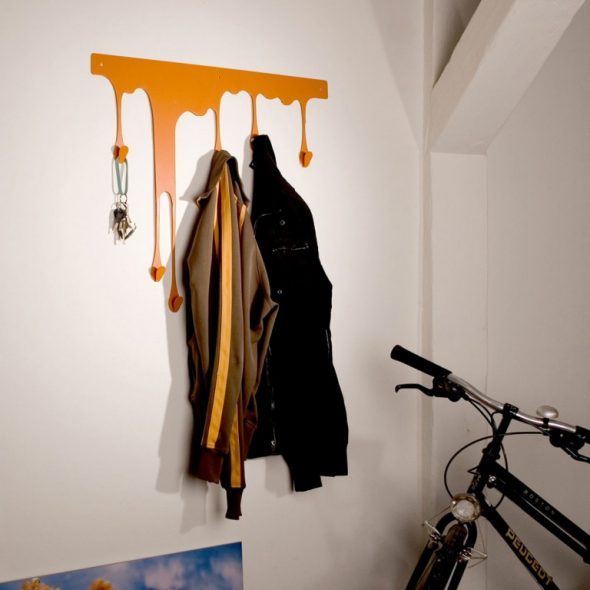
Original wall hangers in the hallway are an important and integral element of the interior.
Content
Types of design and construction
Before you start making, you need to analyze the shape of the corridor. If it is elongated enough, it is better to give preference to a long hanger with compact shelves or without them at all. For overall space, you can choose any model.
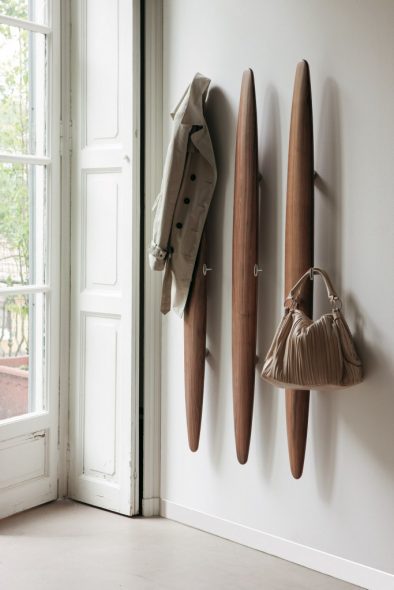
Also it is necessary to take into account the peculiarities of the interior: style, details, the prevailing colors.
The simplest type of hanger is a wooden board with hooks attached to the wall. The presence of shelves for hats, sides, located above or below it. The basis of the design can be taken as a uniform large wooden board, as well as several smaller ones fastened together.
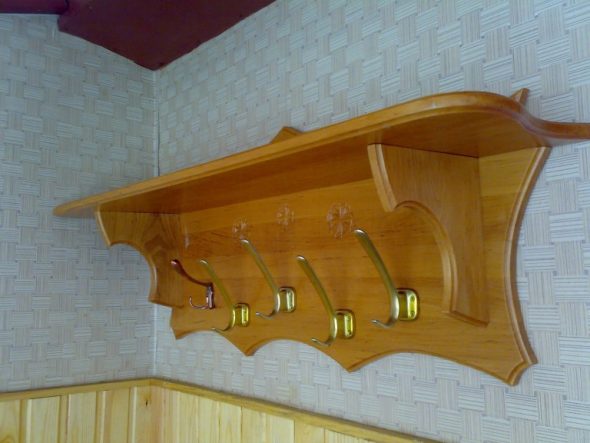
In the traditional embodiment, the wall hanger is a bar on which hooks and pins are located.
If you want to show your creative potential, you can make a non-standard model. For example, an excellent hanger in the nursery will turn out if you create a blank in the form of a cloud, a tree or a sprig. For the corridor, it would be better to cut something else: horns, fence or an inscription.
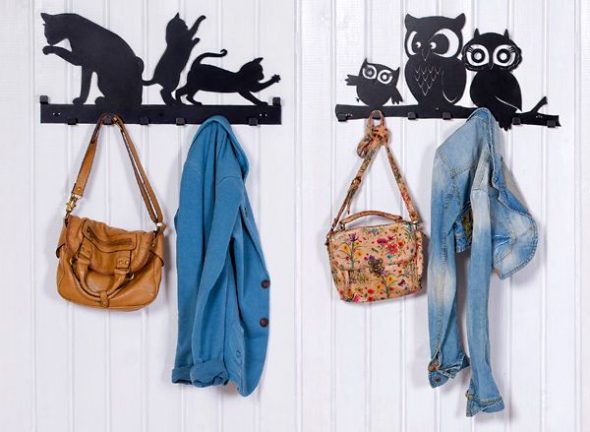
Wall hangers in the hallway and coat hooks are selected according to the style of the room interior.
Materials and tools
Now, almost in every construction store, the buyer is provided with such a rich assortment that it is not difficult to purchase everything you need so that the hanger made of wood was created with your own hands as soon as possible.

Wall hanger in the hallway with your own hands - simple work with pleasure from the result.
To do this, you should buy or prepare the appropriate tools:
- Jigsaw
- A hacksaw;
- A blowtorch;
- Sandpaper;
- Screwdriver or hammer;
- Awl;
- Pencil;
- Roulette.
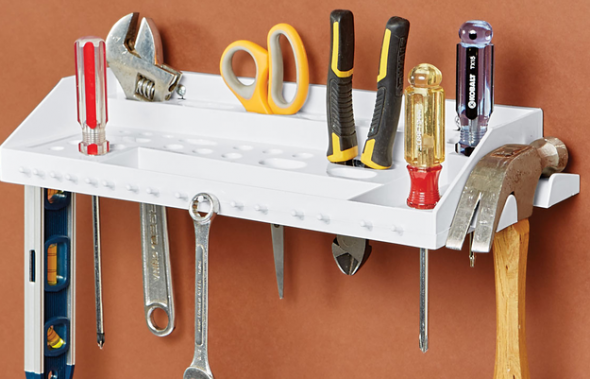
Tools that are useful in the work.
From the materials required:
- A piece of wooden plank;
- Screws;
- Hooks.
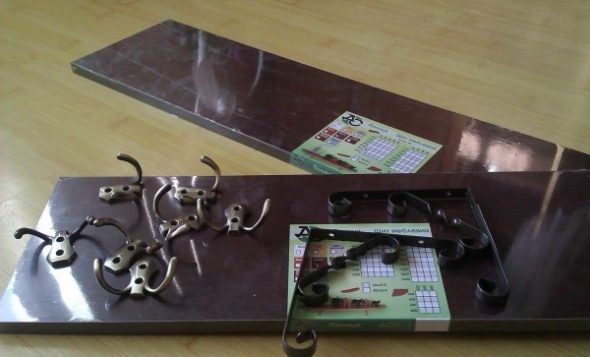
Materials for future hangers.
For decorating:
- Primer;
- Paint brush or roller;
- Varnish or other coating;
- Blanks for decoupage, scissors, glue, textured sponge.
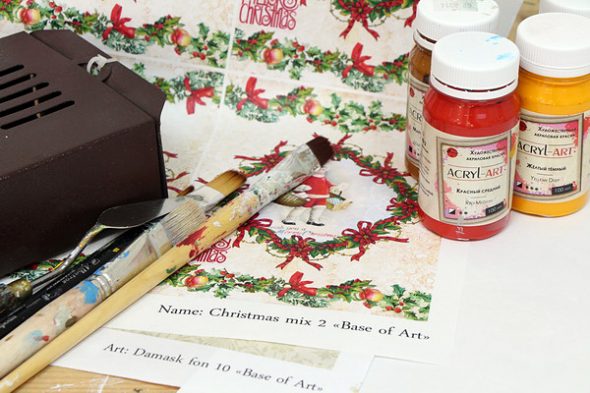
Materials for decorating hangers.
Hanger manufacturing process
A classic hanger, made by hand for the hallway, does not require significant effort. Production takes a minimum of time.Initially, it is necessary to think over the design in detail, it is recommended to make a drawing on graph paper and calculate the consumption of materials.
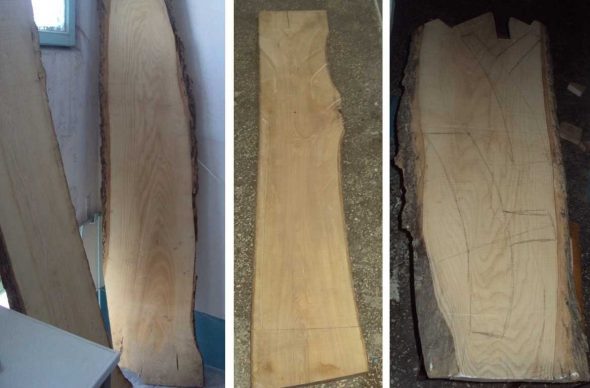
You need to transfer the drawing with a pencil or marker.
Then you should take a wooden sheet (or board) and put it on stable supports so that a few centimeters remain between it and the floor or table surface. Armed with a jigsaw, cut blanks of the required shape, observing the contour. If you want to make the edges of relief, you need to go through the same tool on them.
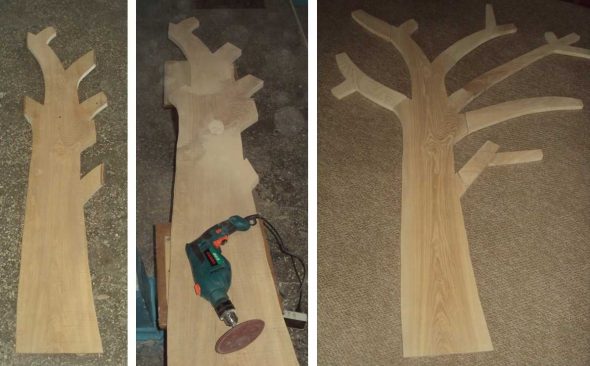
It is necessary to process the roughness, sand the cut and polish.
Next step — giving the desired appearance. To burn the boards, you will need a blowtorch, which is successfully replaced by a gas burner. At this stage, care must be taken not to injure the fingers and not to spoil the material. Then you need to get paint or varnish and cover all the parts cut.
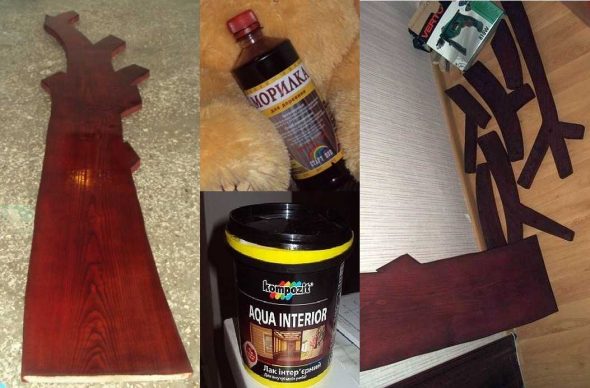
After drying, the assembly of the product is carried out using screws.
The hinged method involves the installation of small metal strips of a rounded shape, called "ears." They are drilled holes for mounting in the dowel screws. The reliability is determined by their length.
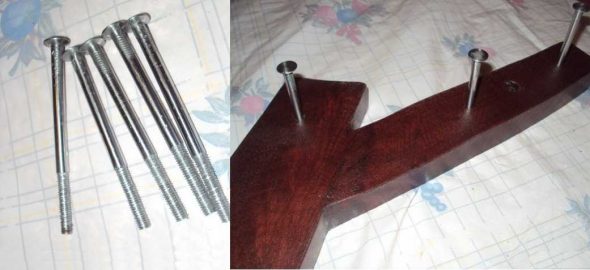
Handmade wall hanger can be fixed in several ways.
Another, no less popular way - making through holes. After their creation and processing, screws or nails with a long leg are let through and the hanger is attached to the wall.
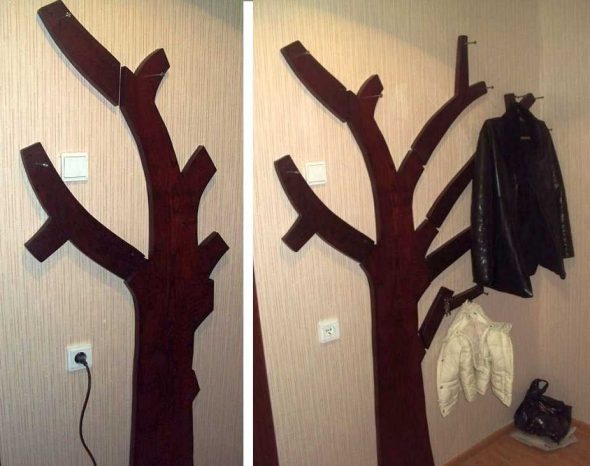
Screws or small nails are usually used for fastening.
To complete the work you need to attach metal hangers. You can arrange them randomly, in one or several rows.
Possible fixation of the following devices:
- "Suckers";
- Adhesive strip;
- Magnets.
Such methods do not cause difficulties and take little time. In this case, the mount is not very reliable and is suitable only for hats.
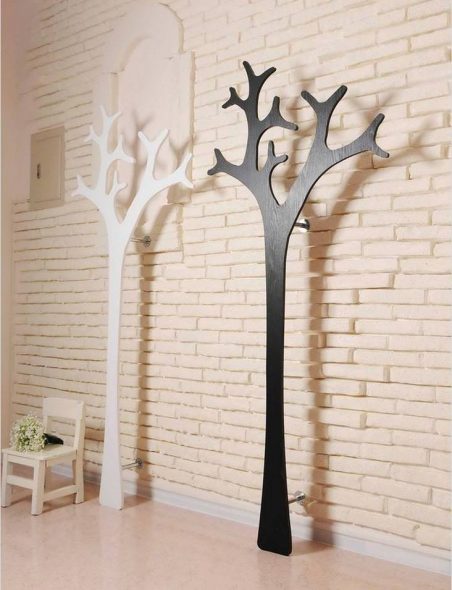
Any bold design options will highlight the relevance and originality of the interior.
Making hangers from longitudinal and transverse boards
This design resembles a lattice, involves the manufacture of a base fastened to the wall from horizontally and vertically arranged planks. In this case, we can conditionally distinguish two layers: the first — transverse, second — with longitudinal.
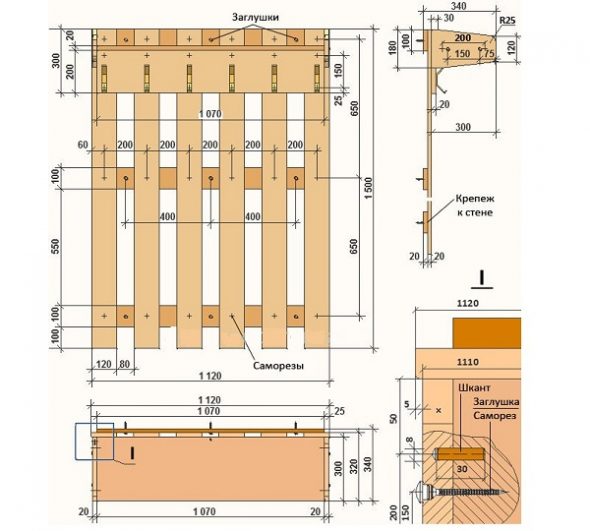
Drawing wall hangers with sizes.
To create a wall hanger with your own hands, you need to stock up on several long boards. It is better to give preference to sawn timber with a width of 10-20 cm and a length of 1 m. Having decided on the size, one should obtain the required number of blanks.

Assembly procedure for hangers.
After that it is necessary to process them so that there are no bumps, chips and roughness, paying special attention to the edges. Then you must first expand the first layer, observing the parallelism and the same distance between the planks. If everything suits, it's time to go to the second level. Armed with a screwdriver (or in the absence of a hammer) to fix their position at the intersection.
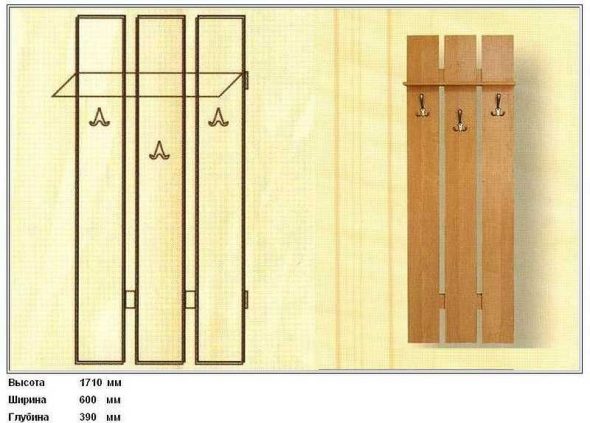
Simple option hangers for self-production.
Attach the hooks to the top boards. If they have a vertical position, it is better to place the hooks in the upper part in one row. For the hanger, the outer side of which is formed by vertical planks, you can create several levels by securing hooks on each of them.

Sizes of a hanger with the shelf.
Dressing
You can complete the production, giving the product an original appearance. The most interesting will be the surface if:
- Cover with gliseal or craquelure;
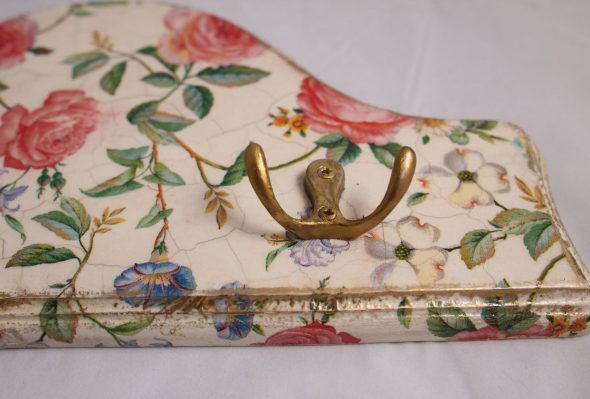
Craquelure is a technique used to give a painted surface a worn and old look.
- Paint colors;
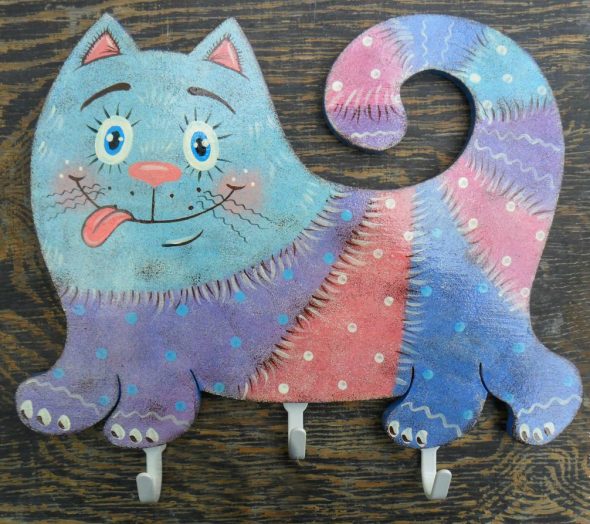
A simple, ordinary wooden coat hanger can be painted so that everyone you know will be delighted.
- Decorate with decoupage.
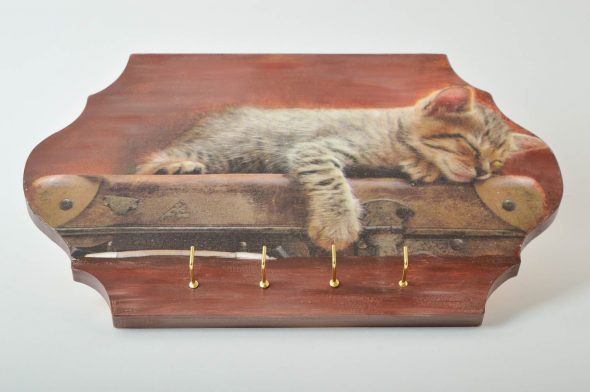
Decoupage hanger can be done using decoupage or ordinary napkins.
Before proceeding to the coating, the wood should be cleaned from traces of dust, dirt and grease.

Materials for decoupage hangers do it yourself.
To do this, it is recommended to use a metal brush. Then, armed with a paintbrush, roller or spray gun, it is necessary to prime the surface by carefully filling all the microcracks.
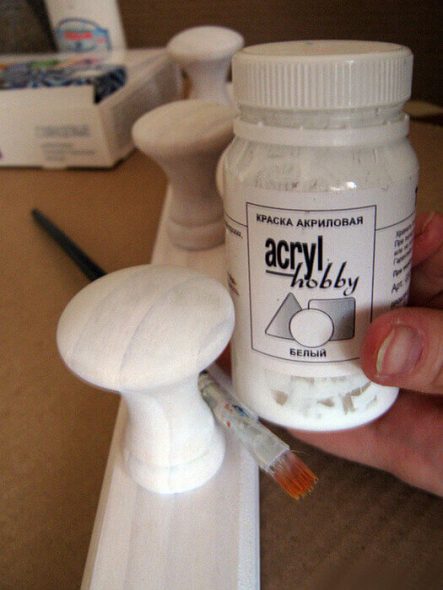
It is necessary to prime our wooden coat with white acrylic paint.
Glizal is a transparent paint, which with certain efforts forms a textured surface. Before starting work, it is necessary to dilute glisal with water, according to the instructions. Then the mixture is applied to the prepared blank and a pattern is created using a textured sponge. We must act quickly, otherwise the coating will harden in half an hour.For the artificial aging of wood used this type of varnish, as craquelure.
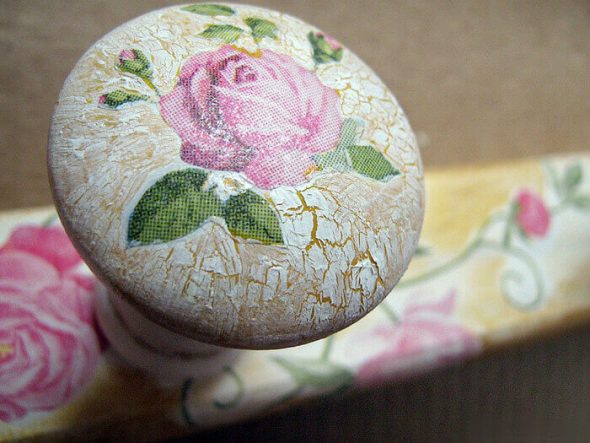
It is applied on a pre-painted surface, which as a result is covered with small cracks.
Decoupage allows you to create wooden products suitable for any interior. Most often it is resorted to when they are trying to get furniture with the effect of antiquity and complex patterns. To decorate such hangers will have to arm with scissors and blanks with a pattern.
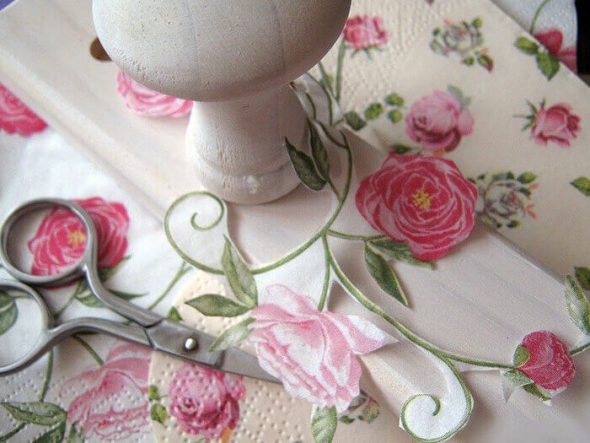
Cutting paper patterns, it is better to impose them on the surface, to evaluate how they will look.
If everything suits — Smear the seamy side with glue, apply it to the tree and level it so that no bubbles form later, then cover it with furniture lacquer and leave it to dry completely.

How to choose the final varnish - you decide. After the varnish has dried, screw the handles in place.
If you have artistic skills, you can apply a drawing with acrylic paints. Initially, the background and large elements are created, then the details are drawn. Finish the work better lacquering and craquelure.
VIDEO: Stylish hangers in the hallway.
Wall hangers in the hall - 50 photo ideas:
 Want to make a cover on the stool with your own hands? Crochet it!
Want to make a cover on the stool with your own hands? Crochet it!
 Faux leather for furniture. What it is?
Faux leather for furniture. What it is?



